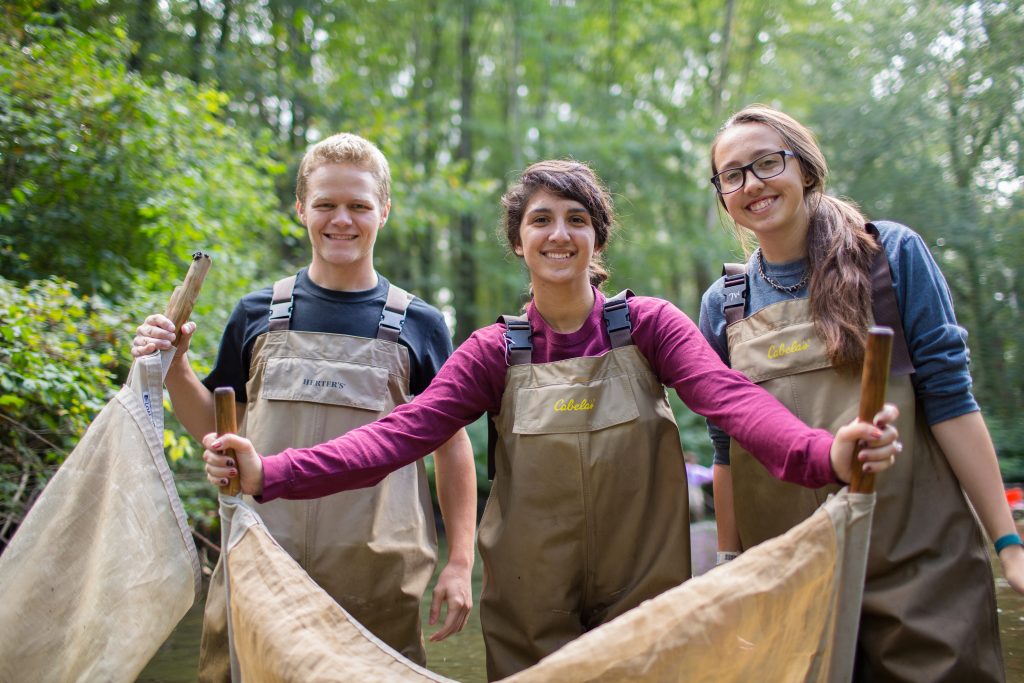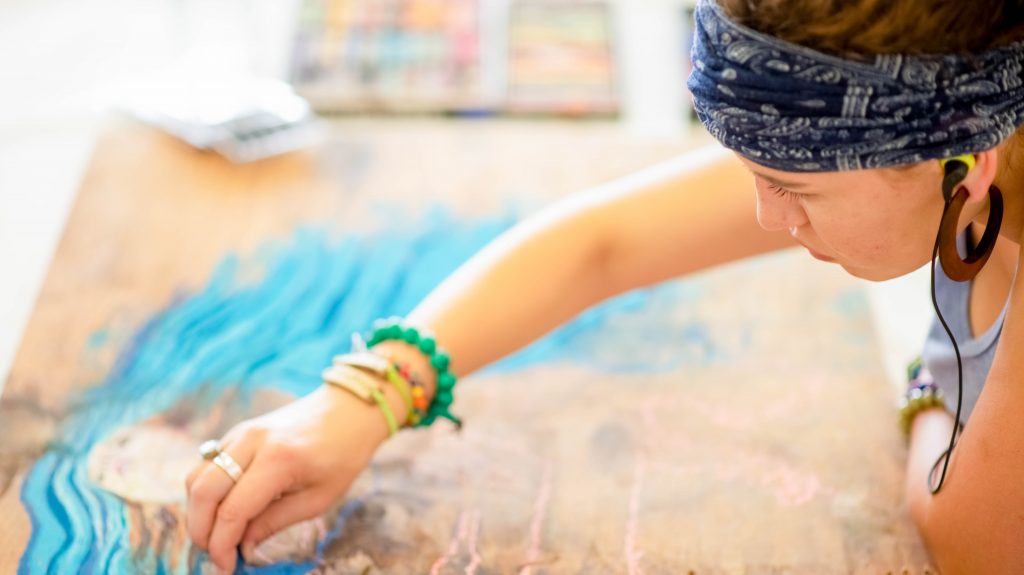
How Does Art Fit into STEM Education?

Are you allured by the wonder of nature, ecology, and the environment? Are you captivated by the beauty of art and its limitless forms of expression? We have good news for you. You don’t have to choose between art and science. We believe there is a place for both — an intersection where your interest in the environment and your passion for art can not only coexist, but thrive.
Let us explain.
STEM at Grace College
You’ve probably heard of STEM education before – science, technology, engineering, and mathematics. At Grace, we highly value our STEM majors. This is evidenced through a collection of time, energy, and resources that we direct toward providing hands-on learning experiences, cutting-edge technology, and top-notch facilities for our students.
Here are just a few of our most recent investments in STEM education. In 2018, we raised more than $8 million to remodel our Dane A. Miller Science Complex for all of our math and science majors to enjoy. In the fall of 2020, we installed a CNC machine for our engineering students to get practice with equipment used on the manufacturing floor. And even more good news for our engineering students, we recently received a $150,000 grant from the Don Wood Foundation to purchase industrial-grade robotics and update the system controller for its testing frames. We’ve made significant investments in our STEM education programs because we know they matter.

Putting the “Art” in STEM
Now, we’re taking STEM education a step further and leaning into the concept of STEAM — science, technology, engineering, ART, and mathematics. Adding art into the mix brings personal expression and purpose into the hard sciences. While some may see art and science as being on two opposite ends of the spectrum, they have a lot more to offer each other than you might think. Art has been discovered as an effective means to express and communicate the sciences. Likewise, the problem-solving abilities of a mathematician or scientist are beneficial to an artist.
Dr. Nate Bosch, director of the Lilly Center and professor of environmental science, eloquently described the relationship between art and science, “The natural environment inspires artistic expression, and art inspires environmental stewardship.”
At Grace, we like to see art and science as friends, not foes. And this is why they live together harmoniously, in our largest school on campus, the School of Arts and Sciences.

Eco-Art at Grace
In fact, we recently launched an Eco-Art major that marries art and science and includes courses from four different departments: visual, performing, and media arts; science and mathematics; humanities; and behavioral sciences. By focusing on the greatest strengths of each of these disciplines, your passion for art in science can be refined to uniquely equip you for the career that lies before you.
Kim M. Reiff, chair of the School of Visual, Performing and Media Arts, is one of the professors for the Eco-Art major and the brain behind bringing this new degree to Grace. “This exciting program is a multifaceted study of our natural environment and art in the context of society,” she said. “It allows students to address contemporary environmental issues through the creation of visual art.”
And Bosch is equally excited for the new degree, “The ecological art major brings these pursuits together in a unique and powerful way,” Bosch said. “God’s amazing creation draws us to love Him and love others better.”
When you start the Eco-Art major, you’ll encounter field research, real-life art in science experiences, and collaboration with the Lilly Center for Lakes and Streams.
Art does not have to be separated from STEM education. Both ecology and art can be explored on a new, revitalized path through an Eco-Art major.
Previous Post

